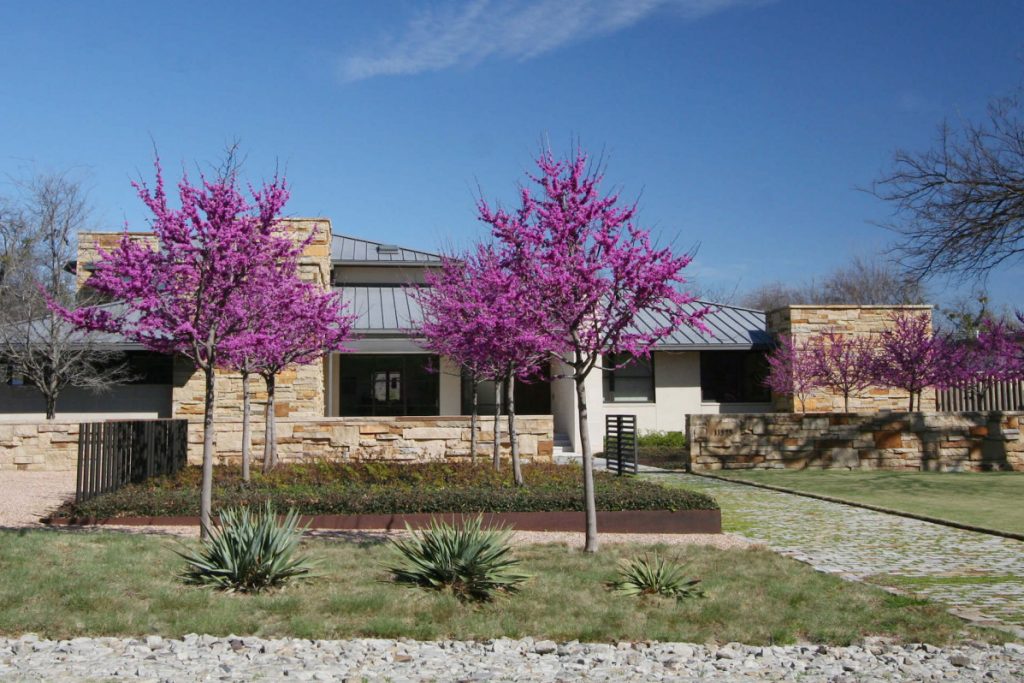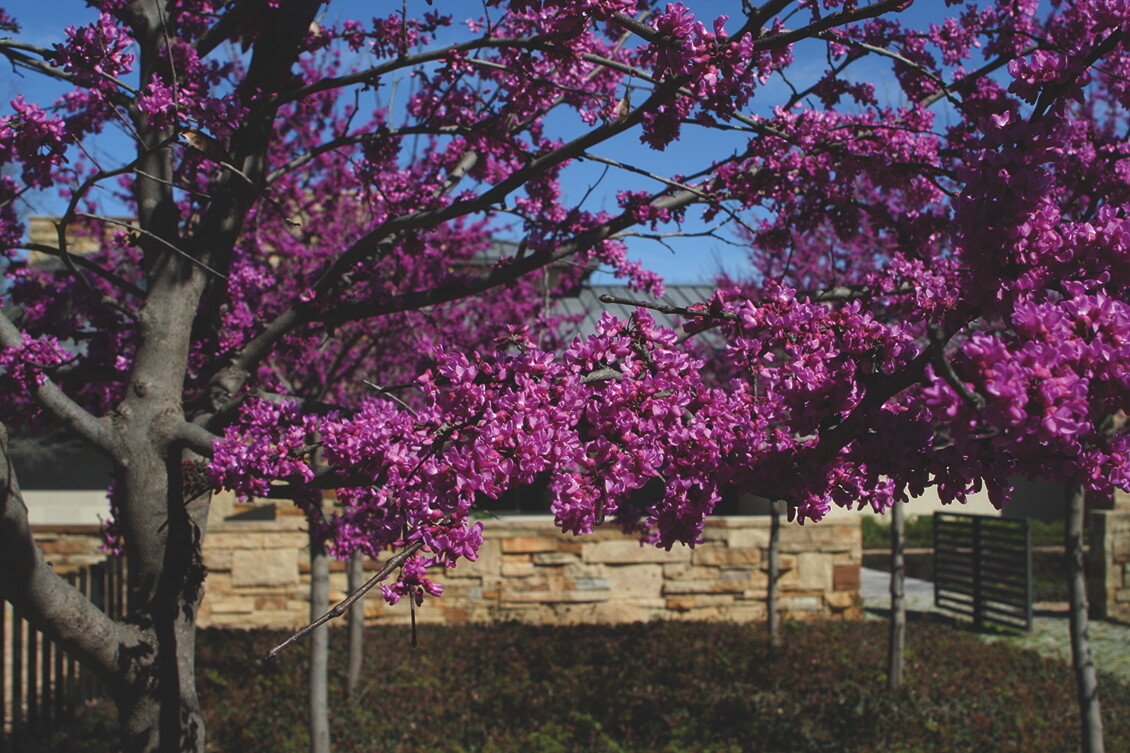
The Best Native Trees for North Texas
The Benefits of Planting Native Trees in Your Landscape
Beneath the canopies of sweet spring blossoms, our stalwart giants connect earth and sky, offering shade, shelter, beauty, and improved air quality. Here in North Texas, we relish the soft breeze as the wind passes through their branches and welcome their enticing fragrance and color as the seasons change. But, their value extends far beyond aesthetics or sensory experience, reaching into economics, environmental, social, and health benefits. Planting trees ensures refuge for wildlife and reprieve from the sweltering summer sun. These majestic marvels also regulate our climate, purify the air we breathe, boost our mental health, and increase our property value. So, root yourself in research and history with us to uncover the narrative behind our local native trees, their significance, and why we celebrate Arbor Day.
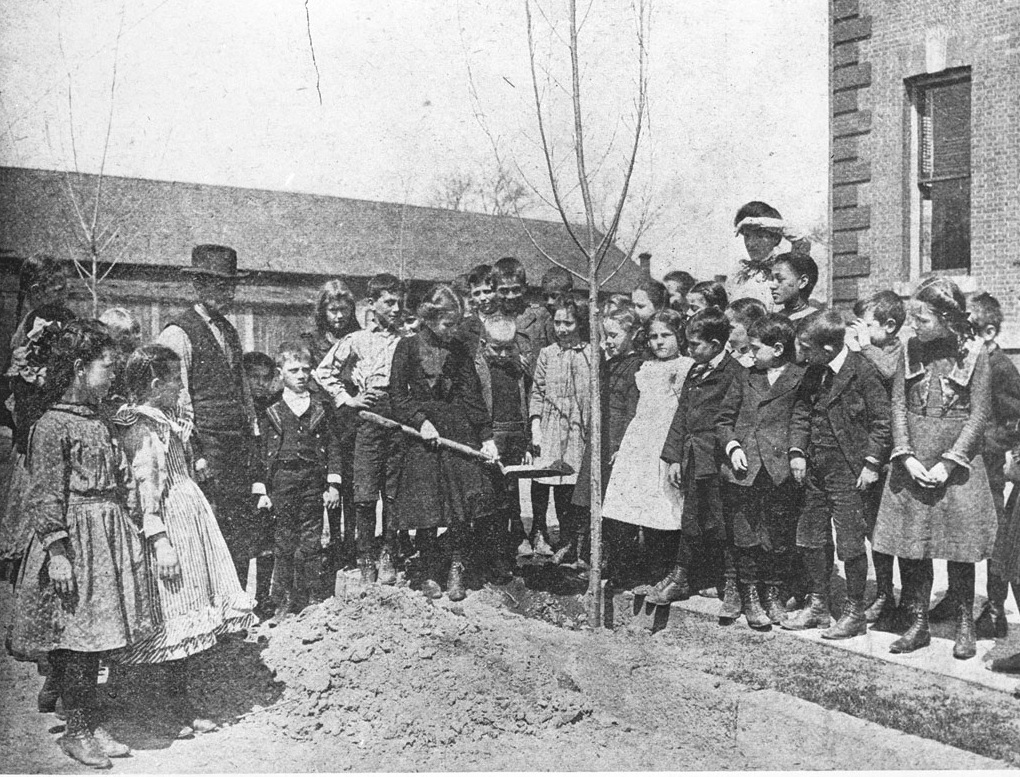
History of Arbor Day
Back in the 1800s, the vast plains of Nebraska lacked trees. Journalist and former secretary of the Nebraska Territory, J. Sterling Morton noted the need for trees for windbreaks, fuel, building materials, and shade, so he recommended the State Board of Agriculture introduce a holiday dedicated to planting trees. On April 10, 1872, over one million trees were planted for the first Arbor Day. A century later, the National Arbor Day Foundation was formed with the mission to educate, inspire, plant, and celebrate the marvels of trees. Today, Arbor Day is typically observed across the country on the last Friday in April (although this may vary depending upon each region’s proper tree planting season). Learn more at www.nationalarbordayfoundation.com.
The Value of Trees
Before we delve into natives, let’s explore the benefits of trees in general. Our towering timbers boast value in every meaning of the word. Here are a few ways they effortlessly contribute to our daily lives and their surrounding universe:
Environmental Value
- Air Purification
- Absorb pollutants to enhance our air quality and emit oxygen, a vital element for all living creatures
- Climate Regulation
- Assist in alleviating climate change by segregating carbon dioxide
- Decrease the urban heat island effects by effectively lowering temperatures through their natural shade
- Return water back into the atmosphere to cool the air
- Water Conservation
- The roots that anchor them help mitigate soil erosion and boost water infiltration
- Help limit flooding, stormwater runoff, and water pollution
- Wildlife Habitat
- Serve as food, shelter, and nesting sites
- Natural contributors to biodiversity and overall ecosystem health
- Soil Health
- Decomposed roots and leaves help amplify the makeup of our soil and its fertility
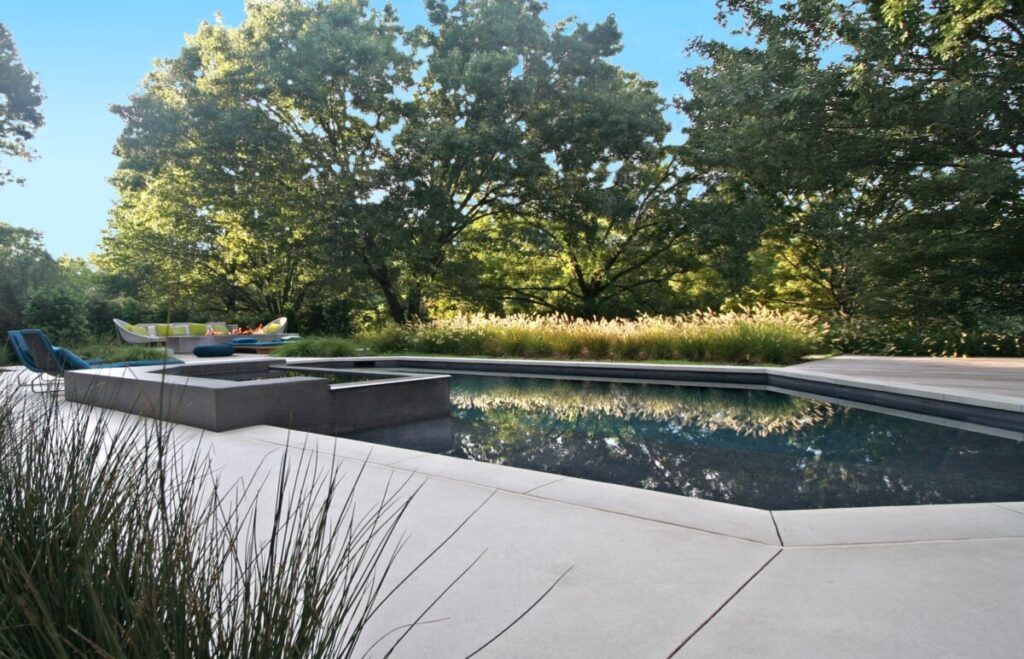
Economic Value
- Upgrade Property Value
- Trees add curb appeal and can improve the value of your estate by up to 20%
- Energy Savings
- Mature trees provide much-needed shade, requiring less air conditioning to cool our hot summers, thus reducing energy bills
- Timber and Forest Products
- Trees offer essential resources for producing paper and construction materials
- Tourism and Recreation
- Tree-lined parks and recreational areas promote tourism and outdoor activities

Social Value
- Enhance Human Health
- Green spaces boost mental health, promote physical exercise, and reduce stress
- Even window views of nature can improve hospital recovery times
- Connect Community
- Tree-lined parks offer alluring gathering spaces
- Aesthetic Beauty
- Trees harmonize the splendor of our surroundings with serenity
- Noise Reduction
- Trees are effective at absorbing bothersome noise pollution
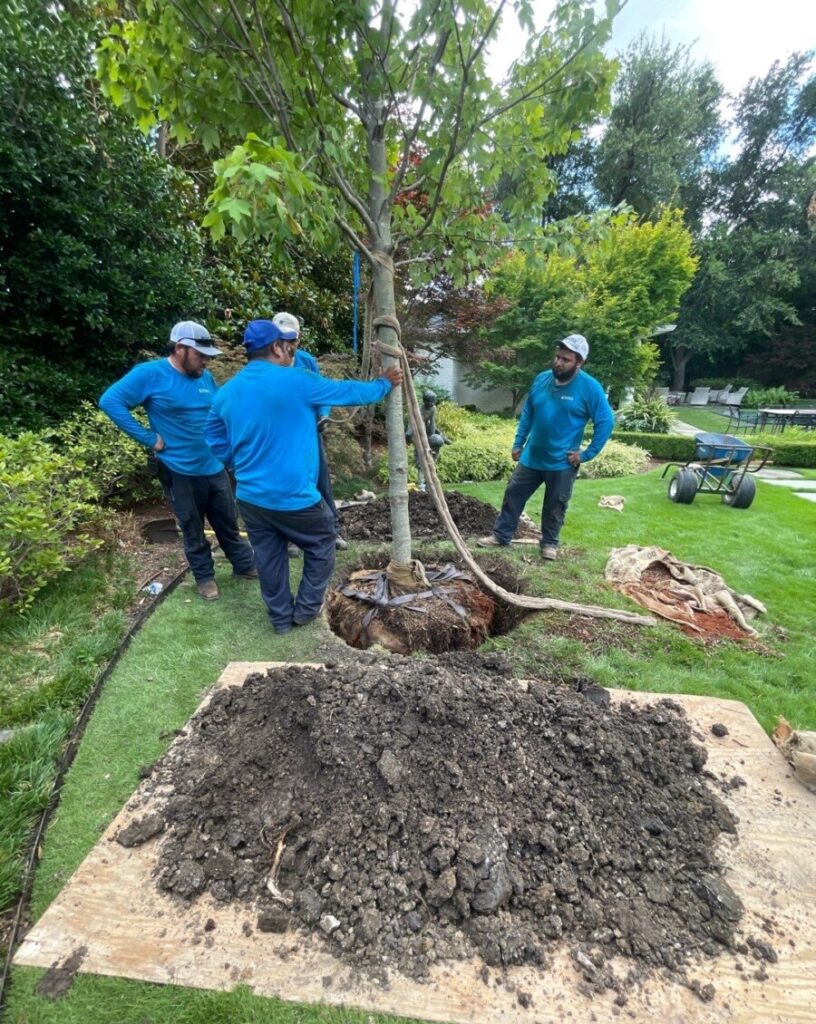
The Downside Of Trees
While the pros clearly outweigh the cons, there are still some possible downsides to evaluate before planting trees in North Texas.
- Water Consumption:
- Since younger trees consume a significant amount of water, they can strain our limited natural resources during droughts.
- Improper watering can cause root rot in some of our heavier clay-based soils. Luckily, Bonick practices carefully monitored water management for all of our maintenance clients.
- Soil Conditions:
- Some species of trees dislike alkaline clay soils, so adequate soil preparation and planting native trees or well-adapted trees will ensure the most success.
- Maintenance:
- Trees require ongoing maintenance, including pruning, fertilization, and pest control, but native trees demand much less.
- While leaves can create extra work, regular landscape maintenance removes the worry and hassle.
- Infrastructure Clash
- Routine inspection and care are needed to prevent power line obstruction or root damage to sidewalks, driveways, and underground utilities.

- Disease and Pests:
- North Texas trees are susceptible to various diseases and pests, such as oak wilt from sap beetles. These insects are drawn to fresh cuts on trees, where they can transmit oak wilt fungal spores from infected trees to healthy ones. For this reason, we avoid pruning in spring and early summer, when sap beetles are most prevalent. So, by timing pruning during the beetle’s inactive cooler months, we can successfully reduce the spread of oak wilt.
- Storm Damage:
- We’ve seen many clients lose trees due to severe storms. Certain trees with weak wood, like hackberries, are more susceptible to damage or loss, but high winds and lightning strikes show no favoritism.
North Texas Native Trees
The good news is that many of the potential cons to planting trees can be avoided by utilizing trees native to our region. Let’s examine where our native trees originate.
Historically, our DFW trees hail from several main North Texas regions. Sadly, due to rapid industrial expansion and population growth, only a small fraction of these areas still exist in their original form.

Blackland Prairies
Before the pioneer movement, the rich soils of the healthy North Texas Blackland Prairies were home to Pecans, Cedar Elms, Hackberry, and various Oaks. Today, due to extensive suburban development, only about 5000 of the previous 12 million acres remain in true prairie condition. The rest encompasses a long line from Denton all the way to San Antonio.
Blackland Prairie Native Trees
| Pecan | Deciduous Holly |
| Black Walnut | Red Mulberry |
| Sycamore | Carolina Buckthorn |
| Eastern Cottonwood | Huisache |
| Burr Oak | Red Buckeye |
| Shumard Red Oak | Eastern Redbud |
| American Elm | Mexican Plum |
| Cedar Elm | American Elderberry |
| Common Persimmon | Eastern Red Cedar |

The Great Trinity Forest
Closer to home is the Great Trinity Forest. According to the Trinity Coalition, The Great Trinity Forest is said to be “the largest bottomland, urban, hardwood forest in America, and maybe in the world.” This bottomland area is known as the Trinity River Basin, boasting an expansive array of native tree species, including:
Great Trinity Forest Native Trees
| Oaks: | Other Hardwoods: |
| Bur Oak | Pecan |
| Post Oak | Cottonwood |
| Shumard Oak | Bois d'arc (Osage Orange) |
| Water Oak | Red Mulberry |
| Live Oak | Green Ash |
| Red Oak | Sugar Hackberry |
| Honey Locust | |
| Elms: | |
| Cedar Elm | Other trees: |
| American Elm | Black Willow |
| Winged Elm | Juniper |

Importance of Native Trees
How Native Trees Benefit Us
Considering our already challenging ecological and climate conditions here in North Texas, it’s even more important to embrace native trees. They naturally trap and store carbon, produce clean air, and protect our urban areas from excessive heat and weather systems. These mighty marvels essentially help mitigate climate change! So, by nurturing native trees, we can do our part to help preserve our surrounding environment.
Practical Reasons to Plant Native Trees
- Soil Compatibility
- Since Dallas has mostly alkaline clay soils, native trees have evolved to flourish in these conditions.
- Over time, they actually enhance the quality of our local soil
- Water Conservation
- More drought-tolerant than non-native species, native trees need less frequent watering
- Less water consumption poses a reduced risk of root rot and other soil-related complications
- Lower Maintenance
- Natives need less pruning, fertilization, and pest control since they are adapted to their natural environment
- Adapted to Local Climate
- Naturally equipped to survive DFW’s climate hot summers and occasional droughts
- Pest & Disease Resistant
- Possess natural protection from local pests and diseases
- Support Our Local Ecosystems
- Offer a natural habitat and food source for native wildlife, including birds, insects, and pollinators
- Help preserve the local ecological balance and enhance biodiversity
- Preservation of Regional Identity
- Maintain DFW’s natural landscape and character
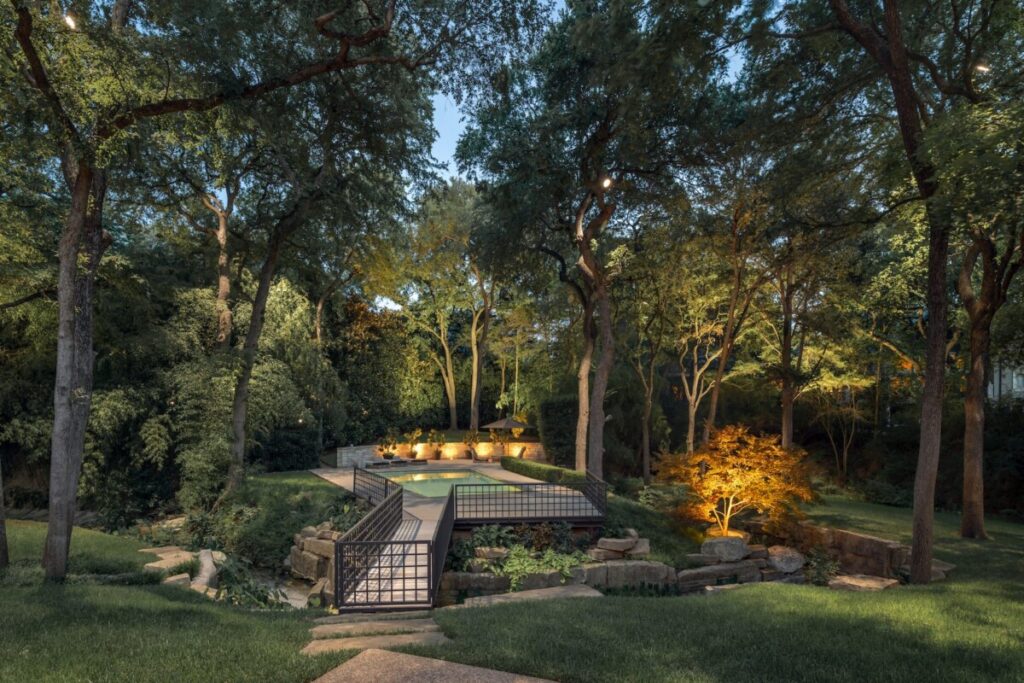
Native Trees with Landscape Value
In order to select the proper trees for your landscape, our garden managers consider the local climate and soil conditions and forecast how the trees will mature in size over time to ensure they thrive and enhance your estate’s worth. Certain species of mature trees are most appealing because they increase real estate value for numerous factors:
Live Oak
These iconic Texas trees are famous for their sprawling canopies and extended lifespan. They enhance a property with classic charm and
Pecan
Pecan trees offer ample shade and stunning beauty, but their key element is the production of delicious, valuable nuts.
Bur Oak
Mature bur oaks boast brawny trunks and towering canopies. These hardy, well-adapted trees are quite the specimen of shade and allurement.
Red Oak
Famous for their festive fall foliage, these large specimens create a stunning amount of shade.
Cedar Elm
These drought-tolerant trees perform well in our hot summers and glow with golden fall color.
Maintaining Trees in Your Landscape
Properly maintained trees can enhance your estate with beauty and contribute to its value. Our arborists and tree care specialists offer protection, mature tree preservation, mitigation, and feeding as well as annual tree trimming, care, and sculpting to keep your trees in pristine condition. We also offer as-needed tree services for storm clean-up, tree planting, root health, tree removal, and stump grinding. Entrust our experts to select, install, and maintain your trees to preserve the legacy of your property for years to come. Contact us today for more information.
Resources:
https://www.tshaonline.org/handbook/entries/trinity-river
You May Also Enjoy:
Beauty Beneath the Bough: The Benefits of Trees
6 Reasons to Spring for a Professional Landscaping Service
How to Grow Climate-Resilient Gardens


